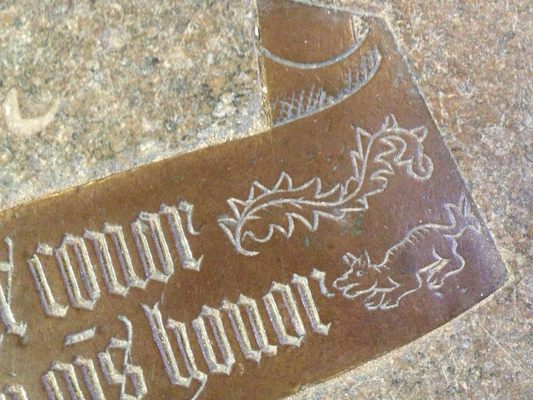About
Before Ralph Hamsterley died in 1518, he commissioned five brass memorial plaques in his own honor, leaving the death date blank. The memento-mori plaque embedded in the floor and hiding under a carpet near the sanctuary of St. Andrew’s church, in Oddington, Oxfordshire is the only one that survives to this day.
Brass memorial plaques were once very common, but the Hamsterley Brass is unique in its delightfully macabre presentation. In it the shroud-wrapped corpse of Mr. Hamsterley is riddled through with worms, weaving through his skeletal eye sockets and bursting forth from his chest.
The inscription reads: “VERMIBUS HIC DONOR ET SIC OSTENDERE CONOR QUOD SICUT HIC PONOR: PONITOR OMNIS HONOR” (“Here I am, given to the worms, and thus I try to show, That as I am laid aside here so is all honour laid aside.”)
Transi, or cadaver tombs, were at the end of their brief period of popularity when Hamsterley died. Most transi are in the form of carved stone vaults depicting a partially decayed corpse. The rage for transi ran through most of the 15th century in France, Italy, and the UK, running out of steam right around the middle of the next century just at about the time the extraordinary Transi of Rene de Chalon put everyone else’s to shame.
Although many cadaver tombs of the more traditional stone variety exist across northern Europe, the brass plaque and particularly its wormy motifs are extremely rare. The Hamsterley Brass has enjoyed a modicum of fame over the years, with pilgrims coming to St. Andrew’s to admire it - it is even said that T.E. Lawrence (as in “of Arabia”) had a rubbing of the Hamsterley Brass in his childhood bedroom.
Under the figure's feet is another inscription, intended to be updated later with the date of his death, but here, nearly 500 years later, it remains blank.
Related Tags
Published
September 16, 2013
































